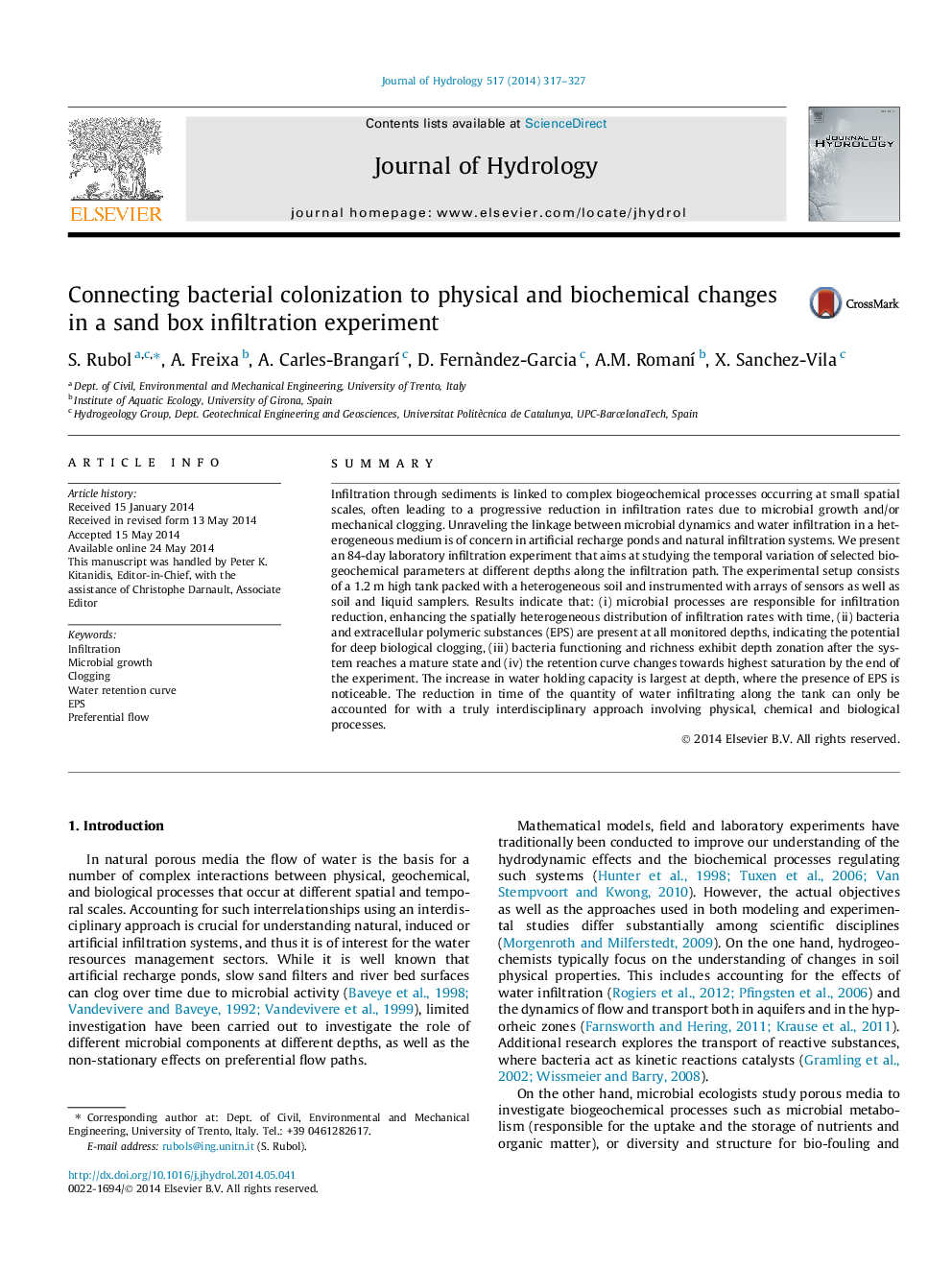| کد مقاله | کد نشریه | سال انتشار | مقاله انگلیسی | نسخه تمام متن |
|---|---|---|---|---|
| 6412939 | 1629931 | 2014 | 11 صفحه PDF | دانلود رایگان |
- Microbial processes are active at all the monitored depths.
- Preferential flow path may be responsible for deep clogging.
- Microbial activity (e.g., EPS production) can shift the soil retention curve towards higher saturation values.
- For a system at mature state, bacteria functioning and richness exhibit depth zonation.
SummaryInfiltration through sediments is linked to complex biogeochemical processes occurring at small spatial scales, often leading to a progressive reduction in infiltration rates due to microbial growth and/or mechanical clogging. Unraveling the linkage between microbial dynamics and water infiltration in a heterogeneous medium is of concern in artificial recharge ponds and natural infiltration systems. We present an 84-day laboratory infiltration experiment that aims at studying the temporal variation of selected biogeochemical parameters at different depths along the infiltration path. The experimental setup consists of a 1.2Â m high tank packed with a heterogeneous soil and instrumented with arrays of sensors as well as soil and liquid samplers. Results indicate that: (i) microbial processes are responsible for infiltration reduction, enhancing the spatially heterogeneous distribution of infiltration rates with time, (ii) bacteria and extracellular polymeric substances (EPS) are present at all monitored depths, indicating the potential for deep biological clogging, (iii) bacteria functioning and richness exhibit depth zonation after the system reaches a mature state and (iv) the retention curve changes towards highest saturation by the end of the experiment. The increase in water holding capacity is largest at depth, where the presence of EPS is noticeable. The reduction in time of the quantity of water infiltrating along the tank can only be accounted for with a truly interdisciplinary approach involving physical, chemical and biological processes.
Journal: Journal of Hydrology - Volume 517, 19 September 2014, Pages 317-327
